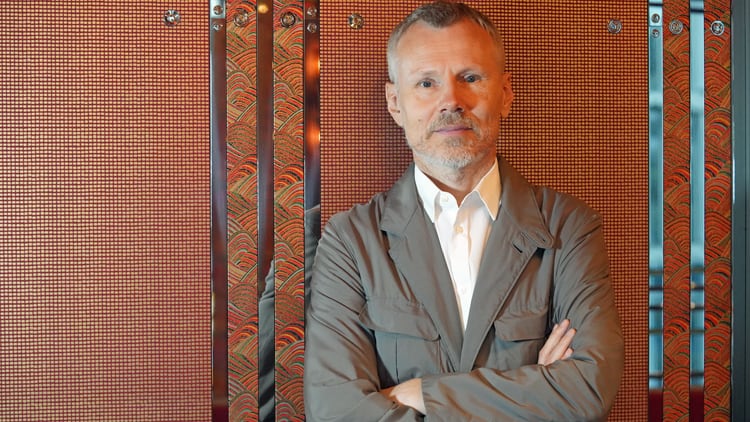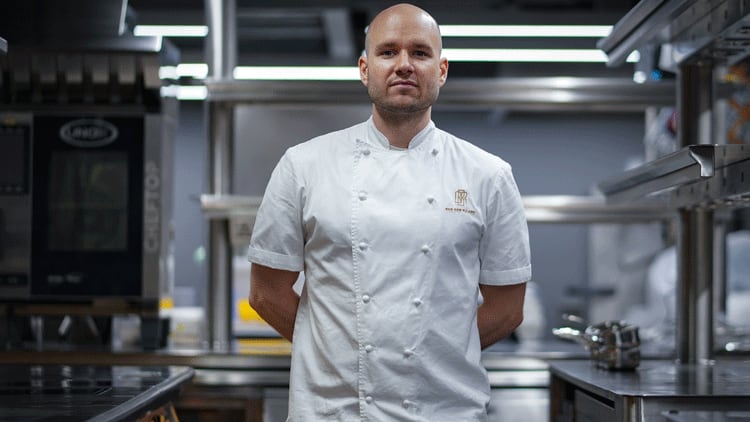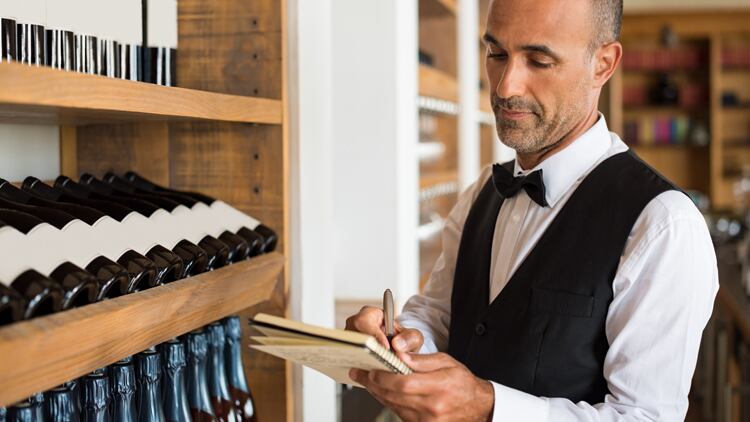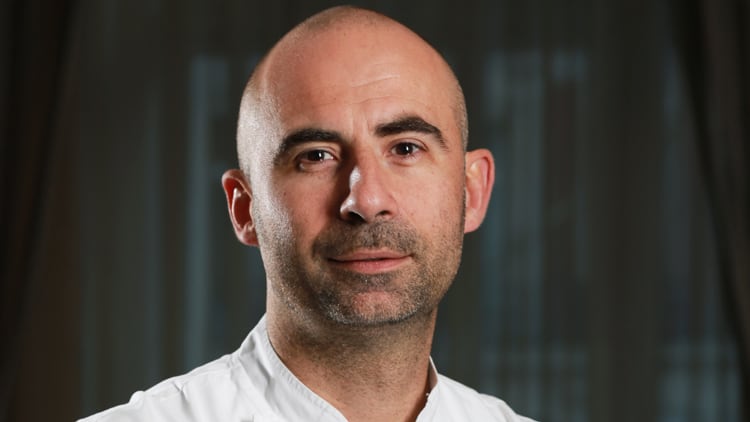Leonid Shutov doesn't have much luck with the timing of his restaurant launches. His debut restaurant Bob Bob Ricard was conceived around 2006 but launched in 2008 amid the global financial crisis. With its push for champagne buttons, designer staff uniforms and gold accents, the wonderfully over the top Soho restaurant was hopelessly out of step with the mood music of the time.
“It was planned in a very different world,” the Russian restaurateur says of his characterful London debut, located somewhat aptly by Soho’s Golden Square. “When we eventually opened people were tightening their belts and worrying about their livelihoods. Such a frivolous-looking restaurant was not a great fit. But what could we do?”
Another unprecedented global crisis gave Shutov’s doubly audacious follow up to Bob Bob Ricard an even bumpier ride. Launched in 2019, Bob Bob Cité had only traded for eight months before the pandemic hit, reawakening from its enforced hibernation only last month with the group – almost certainly correctly – having taken the view that the Square Mile is only now busy enough to support such a large statement restaurant.
Having a site shut for 18 months would be debilitatingly worrisome for any group, but the astronomical cost of the 15,000 sq ft Leadenhall Building site – a rumored £25m - has landed Shutov and his investors with a debt pile of near unthinkable proportions. Yet Shutov is cut from a different [Savile Row] cloth.
“It’s been painful,” says the mild-mannered restaurateur, who recently secured a working capital funding package from alternative lender ThinCats to support the reopening of his two restaurants. “There was a massive investment up front so there is a lot of capital at stake. We’re going to spend the next decade working off the debt that we’ve had to take on just to get through the past 18 months. But we have had great support from our landlord and lenders. And those that fund the restaurant aren’t taking a short-term view.”
At this point it should be pointed out that despite Bob Bob Cité having ended up being a very difficult second album, the former Moscow ad agency boss is a highly accomplished restaurateur. Not only is Bob Bob Ricard among London’s highest grossing restaurants, it’s also one of its most distinctive: an oft-imitated landmark on the capital’s luxury scene. Shutov is blessed with an eye for detail and a mischievous sense of fun that’s often sorely lacking in places that are primarily pitched at the very wealthy.
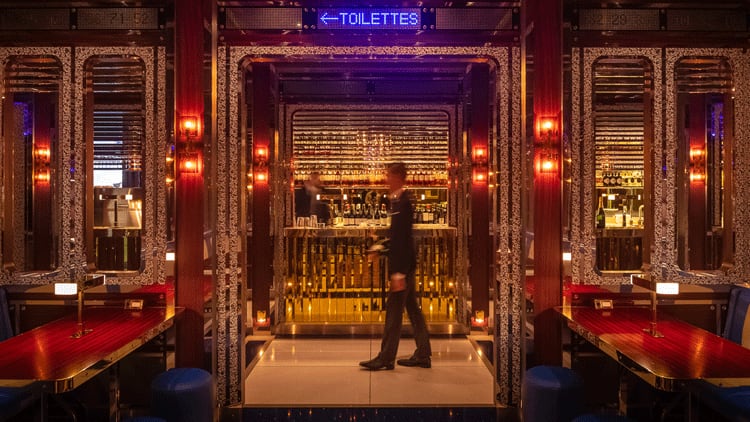
But perhaps most importantly Shutov – who is not short of a few bob, so to speak, having coughed up the majority of the capital for both venues himself – understands what people with deep pockets want from a restaurant. In fact, that’s precisely why he entered the business.
“I went into restaurants for the same reason a lot of people do – the foolish belief that I could do it better,” he smiles. “It turns out it’s a lot harder than it appears from the outside.”
Bob the rebuilder
While Shutov concedes he didn’t get everything right in the early days – the Upper James Street restaurant was not without its teething problems and divided critics initially - his determination to do decadence differently resulted in a number of innovations that have had a significant impact on London’s luxury restaurant scene.
Alongside Bob Bob Ricard’s famous press for champagne buttons he pioneered a more relaxed approach to high-end service – people might be spending large sums but there’s minimal fawning and faff – progressive dress codes, fairer fine wine pricing and booth seating.
“I love going to basic American diners because I love sitting in a booth. The idea that they did not exist in the luxury end of the market seemed odd to me. People want a bit of privacy, but they also want to be part of a lively dining room,” says Shutov, who regrets not putting booths into Bob Bob Cité’s spectacularly glamorous yet somewhat austere Pompidou Centre-inspired 240-cover dining room.
This issue – and several others – have now been addressed as Bob Bob Cité is brought more in line with its Soho sibling and reopens as Bob Bob Ricard City.
"We did not have a chance to build proper relationships with our new customers in the City. To attempt to reopen as we were would have been crazy"
“The reception from the City was warm and we had good reviews. But this restaurant has now been closed for a year-and-a-half, which is an unprecedented situation. We did not have a chance to build proper relationships with our new customers in the City. To attempt to reopen as we were would have been crazy. We’re not news anymore.”
Even for Shutov, ripping it all out and starting it again was unthinkable given the initial investment. Instead, he and Shane Brady of luxury interior design agency BradyWilliams worked largely within the framework and geometric principles of the original design to soften the look of the space in a bid to cocoon guests in “warmth, luxury and quality”.
Tactics include the strategic use of smoked-glass screen to create booths, the addition of velvet curtains and rugs and new art, including a portrait of the London restaurant scene’s Patsy and Edina Pierre Koffmann and former Bloomberg critic Richard Vines. In addition, the composite plastic wall panels and seating areas have been replaced with rosewood (perversely, the former were considerably more expensive than the latter).
“Previously the two venues were designed to be distinct. We now want to bring them together but not to the extent that Bob Bob Ricard City feels like a carbon copy of Bob Bob Ricard,” says Shutov, who started work on the site last June.
It’s been a protracted process due to the number of different finishes and the fact that, unlike a normal restaurant construction job, the team are unable to work in phases. “There’s a lot here that can be damaged, so we had to go slow,” explains Shutov, who has also tweaked the LED table numbers that run round the site to alert staff to tables in need of champagne. “They were constantly on, which was a bit distracting for guests. The number now only lights up when a customer presses the button.”
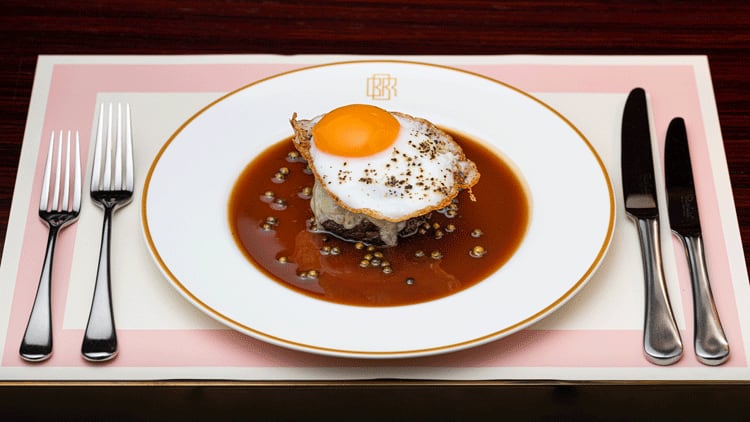
Heading east rather than west
Most would have guessed Shutov would head west for his second site, to Chelsea or perhaps Knightsbridge, but that would be a misunderstanding of his approach to opening restaurants.
"We don’t look at things the way typical restaurant operators do. Yes, a lot of our customers are based west. But the bigger question was ‘where can we build something of great quality?’ In Chelsea and Knightsbridge we would have faced that same problem we do in Soho – there just isn’t any space. We decided we’d rather build our clientele slowly in the City than compromise on the space.”
Billed at the time as London’s largest luxury restaurant, Bob Bob Cité did not get much time to prove itself, but Shutov says he was more than happy with the restaurant’s performance prior to the world coming to a shuddering halt.
“People are always saying that three martini lunches are a thing of the past and that people now have limits on how much they can expense. The opening of Bob Bob Cité proved that this is not the case. There are enough people that do want to do that still. That niche will always be there.”
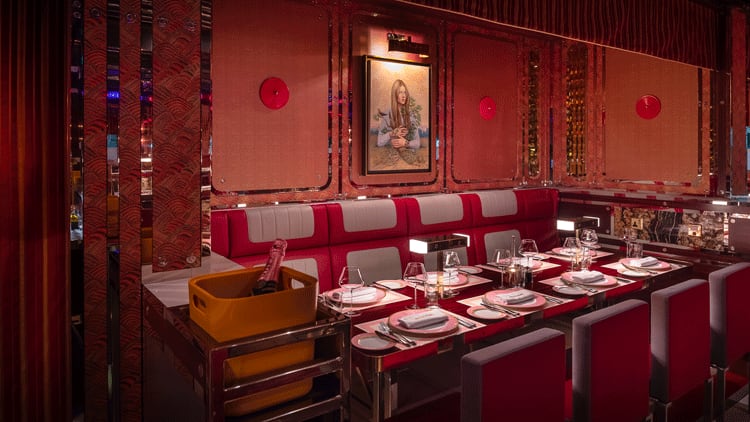
From Russia with love
The menu at the original Bob Bob Ricard is a curious yet effective blend of British and Russian comfort food that’s been given a gilt edge. “We don’t do fusion and we don’t do a little bit of this and a little bit of that either. Having pasta and sashimi on the same menu is naff. But we are eccentric. We combine elements that should not work together in a way that feels natural,” says Shutov.
Inevitably given the restaurant is approaching its 15th birthday, chefs have come and gone over the years with the once double-Michelin-starred Eric Chavot and Anna Haugh – now at her own restaurant Myrtle – its kitchen’s most high-profile alumni. The current chef is Tom Peters, whose CV includes Oslo’s Maaemo and a long stint with Steve Groves at Roux at Parliament Square.
Prices are surprisingly fair given the venue’s luxury positioning, with starters priced at around £10 (so long as they’re not ordered covered in caviar) and most mains around the £20 mark. Key dishes include various types of Russian dumplings, steak tartare, chicken kiev, lobster macaroni cheese, and the more recently introduced turbot coulibiac, a Russian specialty of turbot fillet and scallop mousse enshrined in puff pastry and served with champagne beurre blanc.
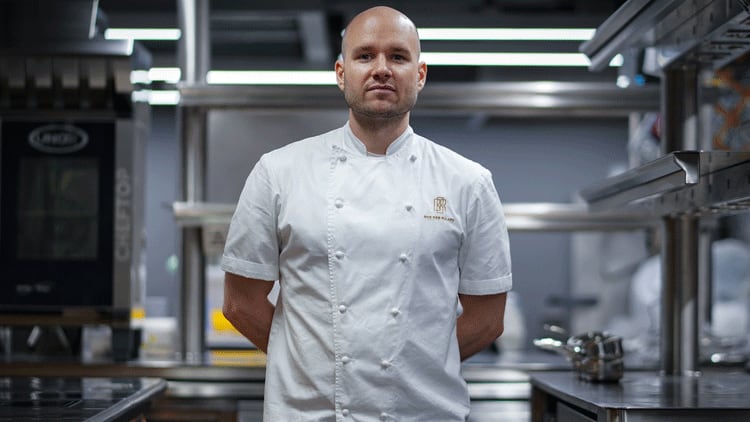
Channel hopping
As its original name suggests, Shutov’s follow up to Bob Bob Ricard took its culinary cues from France. The venue was opened by Chavot but the flamboyant Frenchman moved on shortly after launch citing personal reasons, although not before he’d impressed critics including The Guardian’s Grace Dent and Evening Standard’s Jimi Famurewa.
Now under the direction of former Galvin brothers and The Hand & Flowers chef Ben Hobson, Bob Bob Ricard City’s menu continues with the French theme but, Shutov says, has been brought a little more in line with its older sibling.
“Initially we looked to France because we wanted to create distance between the two restaurants,” he explains. “With many English and Russian classics having their roots in France it made sense. It felt criminal to let that go, especially as it had been so well received.”
“There are certain things people will expect to see on the menu, especially following the change of name, not least the chicken kiev"
The new menu combines dishes that would not look out of place in a Parisian brasserie - escargot en persillade; French onion soup; mussels with champagne; rabbit à la moutarde; and an ultra-luxurious riff on a croque madame involving truffle and duck egg – with Bob Bob Ricard classics. Crucially, dishes from the latter camp are faithful recreations, which was not the case for the handful of Bob Bob Ricard dishes on Chavot’s original menu.
“There are certain things people will expect to see on the menu, especially following the change of name, not least the chicken kiev,” Shutov says. “As they’re our signatures, I also think they’d be disappointed if they were to be done differently.”
Other Bob Bob Ricard greatest hits to grace the City site’s menu include chicken and champagne pie; beef Wellington for two and the restaurant’s signature Chocolate Glory dessert, which arrives encased in a characteristically OTT golden chocolate sphere.
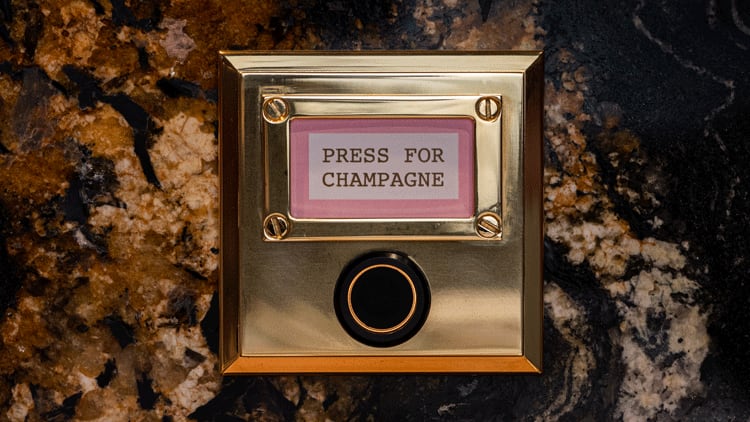
Sticking with the classics
The drinks programme will continue to be pretty much identical to that of Soho, which will be good news to the many fans of Shutov’s disruptive approach to fine wine.
Perhaps counterintuitively given its luxury market positioning, Bob Bob Ricard was a pioneer of fairer pricing. Shortly after launch Shutov capped mark ups at £50 a bottle, a policy that saw him dramatically undercut his competition and trigger a much-needed conversation about extreme profits on wine in top-end restaurants.
"If we took the same approach as other restaurants that serve fine wine and listed multiple vintages from one producer, we would not be able to offer the level of value that we do"
Bob Bob Ricard has never had a huge list, but in more recent years Shutov has become even more focused with roughly 100 bins available at each of its sites.
“Relatively speaking we offer our guests a tiny amount of choice,” he says. “But if we took the same approach as other restaurants that serve fine wine and listed multiple vintages from one producer, we would not be able to offer the level of value that we do.”
Shutov’s policy of listing only a handful of wines per category results in tempting prices that often undercut retail, including Dom Pérignon 2010 for £156, Château de Beaucastel’s Châteauneuf du Pape 2008 for £124 and Domaine Leflaive’s Puligny Montrachet 1er Cru Le Clavoillon 2011 for £170. What’s more, bargains such as these are consistently available due to the groups policy of buying up large parcels of wine.
The market for fine wines has changed a great deal since Bob Bob Ricard first opened its doors in 2008: the price of wines made by top producers in classic regions has rocketed, causing most restaurants to seek alternatives that are less in demand and often just as good. Yet Shutov has stuck to his guns.
“It’s wonderful that you can now buy wines of staggering quality for £30 a bottle. Sommeliers are now earning their keep sourcing good value wines that can give £200 bottles a run for their money because they are beautifully made by skilled producers.”
But this is not what the typical Bob Bob customer is looking for, with most of Shutov’s guests keen to get stuck into the big names. “They want a name and a story that excites,” he continues. “They don’t want something that’s like that thing: they want that thing. And we’re able to offer it an unbeatable price.”
Unfortunately, having ‘that thing’ is getting harder and harder for Shutov, who sources much of the wine for his restaurants himself supported by his GMs and his long-standing wine consultant Jerry Bannister.
Steadily rising prices over the past few decades have been compounded by recent events, including a succession of poor European harvests and the pandemic-born trend of people drinking more fine wine at home .“Wealthy people have realised they can drink amazing wines at home for far less than it would cost them in a restaurant,” Shutov says. “This has created a lot of demand that was not there before. Prices are higher and availability is low. Part of the reason we’re only trading at Bob Bob Ricard City Tuesday to Saturday initially is that we’re worried we won’t be able to get enough stock.”
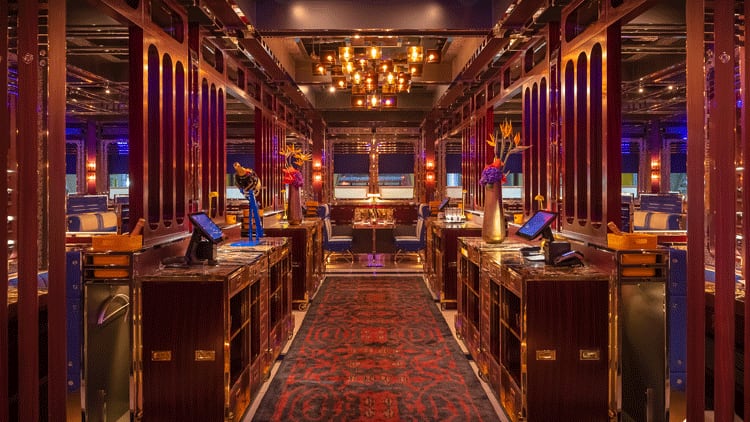
Big in Japan
Rather surprisingly given the challenges of the past 18 months, Shutov is poised to push the ‘press for restaurant’ button on Bob Bob Ricard’s first international location. And in Tokyo, no less, a city in which another British import, Lina Stores, recently touched down. While a site has yet to be identified, Shutov is adamant that he will export Bob Bob Ricard to the Far East within the next few years. In fact, he’s gone as far as to list a Tokyo outpost on the group’s website as ‘coming soon’.
“I’m learning Japanese. My kids are learning Japanese. My daughter may go to university there. It’s happening. We have a good Japanese following as well as a broader Asian following, so it makes a lot of sense,” says Shutov, whose efforts to secure a site are currently being stymied by Japan’s strict travel rules.
“I know Tokyo well but I need to spend a few months on the ground. We also need to physically be there to sign a deal.” Shopping and restaurant hub Ginza - think Mayfair but busier - is the most likely district for Bob Bob Ricard Tokyo but Shutov also plans to explore some less obvious locations.
“The market in Tokyo is incredibly advanced and the quality of the real estate is absolutely phenomenal. We’re mainly dealing with landlords as opposed to agents. They’re very engaged and keen to have the quality of operation that we can offer.”
The restaurant – which will be funded by Shutov and his current group of backers with no Japan-based partners involved – could open as early as 2023.
You don’t need to be an expert on Tokyo’s restaurant market to know that Bob Bob Ricard’s kitsch and fun take on luxury dining is likely to translate well. Let’s just hope it’s a case of third time lucky and that the world doesn’t implode again shortly after it launches.


